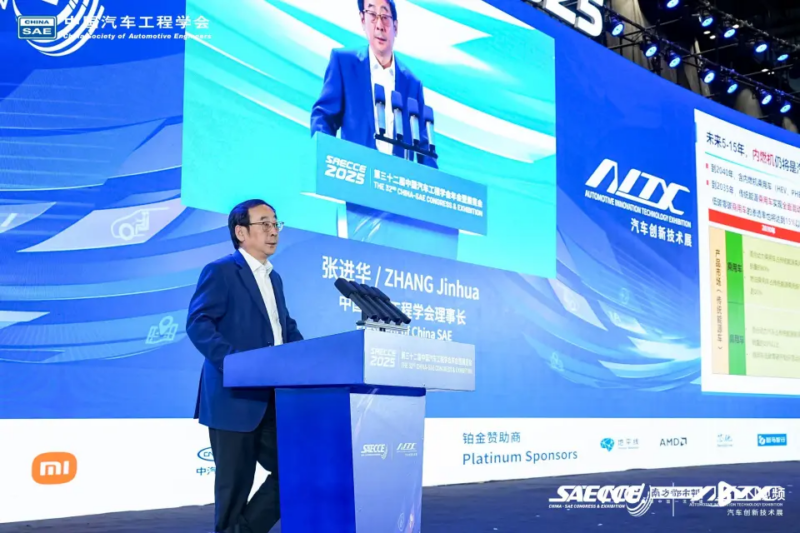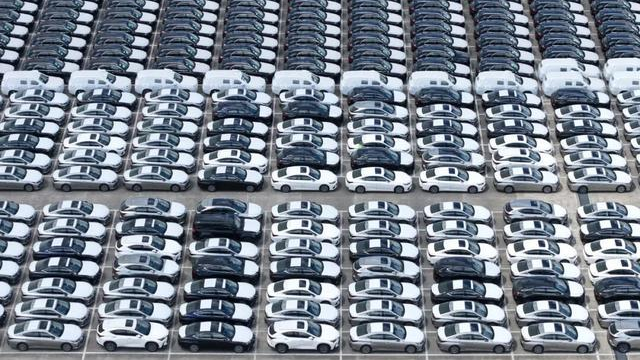Roadmap to 2040: China’s automotive industry sets sights on 80% EV penetration, and L4 autonomy
China’s automotive industry is charting an ambitious course for the future with the release of the “Energy-Saving and New Energy Vehicle Technology Roadmap 3.0” by the China Society of Automotive Engineers (CSAE) on October 22nd. This latest iteration, building upon versions 1.0 (2016) and 2.0 (2020), emphasises a global perspective, focusing on the sustainable development of energy-saving vehicles, the iterative upgrade of new energy vehicles, and the evolution of intelligent connected vehicles.
The roadmap outlines a comprehensive vision for China’s automotive industry through 2040, setting several key targets:
- Carbon emissions: The automotive industry’s total carbon emissions are projected to peak by 2028, ahead of the national commitment, and decrease by over 60% from the peak by 2040.
- Traffic system: A transportation system dominated by intelligent connected new energy vehicles will strive for “zero accidents, zero casualties, and high efficiency.”
- New energy vehicle penetration: New energy vehicle penetration is expected to exceed 80%, accelerating the industry’s full electrification.
- Intelligent connected infrastructure: A mature and robust “vehicle-road-cloud integrated” intelligent connected vehicle infrastructure ecosystem will be established, enabling the large-scale application of high-level autonomous driving vehicles.
- Innovation hub: China aims to become a global hub for original innovation in automotive technology, with its innovation capabilities leading the world, fostering integrated development of education, technology, and talent.
- Modern industrial cluster: The goal is to build a modern automotive industrial cluster that is innovation-led, data-driven, collaborative, efficient, resilient, secure, low-carbon, and sustainable, achieving high-end, intelligent, and green development.
- Global competitiveness: Chinese brands will significantly enhance their global competitiveness, with key component enterprises deeply integrated into the global industrial system, positioning China among the world’s leading automotive powers.
Zhang Jinhua, Chairman of the CSAE, highlighted that Roadmap 3.0, while focusing on the electrification, intelligence, and low-carbon transformation of the automotive industry, places a stronger emphasis on intelligent manufacturing. “Earlier versions focused more on product technology; this year, product technology and manufacturing technology are driving forces,” he stated.

Key technological milestones:
The roadmap clarifies several critical technology development nodes, notably affirming that internal combustion engines will remain an important power source for vehicles:
- Hybridisation of traditional vehicles: By 2035, all traditional energy passenger vehicles will be fully hybridised.
- Internal combustion engine share: By 2040, vehicles with internal combustion engines (HEV, PHEV, EREV) are still expected to account for approximately one-third of new passenger vehicle sales.
- New energy vehicle dominance: New energy vehicles are set to become the mainstream product in the automotive market within the next 5-15 years.
- BEV penetration: By 2040, new energy passenger vehicle penetration will reach over 85%, with Battery Electric Vehicles (BEVs) accounting for 80% of that figure.
- Commercial vehicle expansion: The application scenarios for new energy commercial vehicles will expand from current urban and short-distance uses to include medium and long-distance routes.
- Intelligent connected vehicles: Intelligent connected vehicles will enter a fast lane of market-oriented development. By 2040, Level 4 (L4) intelligent connected vehicles will be fully popularised, and Level 5 (L5) intelligent connected vehicles will begin to enter the market. Networked collaborative scenarios and safety reliability will continuously improve, supporting the large-scale safe application of autonomous driving.
- Smart manufacturing: The roadmap introduces a grading system and methodology for automotive intelligent manufacturing development. By 2040, guided by quality improvement, efficiency enhancement, cost reduction, and low-carbon principles, and through data interconnection and closed-loop data, integrated R&D, production, supply, sales, and service across all stages of automotive manufacturing will be achieved.
- Solid-state batteries: Solid-state batteries are projected for small-scale application by 2030, with large-scale global promotion expected by 2035. At that time, their comprehensive performance, cost, and environmental adaptability will better meet consumer demands.
No related articles available.
